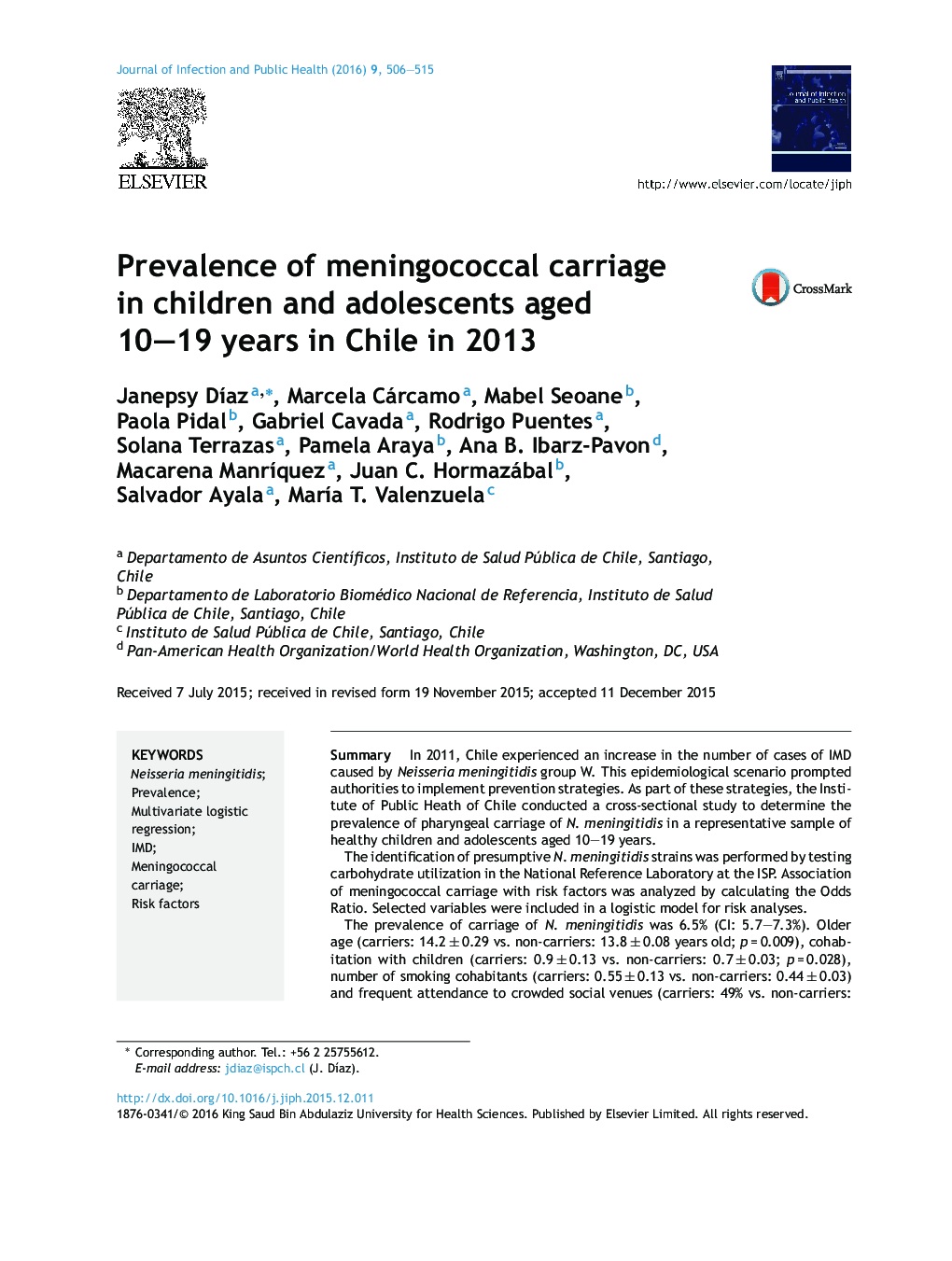| Article ID | Journal | Published Year | Pages | File Type |
|---|---|---|---|---|
| 3405909 | Journal of Infection and Public Health | 2016 | 10 Pages |
SummaryIn 2011, Chile experienced an increase in the number of cases of IMD caused by Neisseria meningitidis group W. This epidemiological scenario prompted authorities to implement prevention strategies. As part of these strategies, the Institute of Public Heath of Chile conducted a cross-sectional study to determine the prevalence of pharyngeal carriage of N. meningitidis in a representative sample of healthy children and adolescents aged 10–19 years.The identification of presumptive N. meningitidis strains was performed by testing carbohydrate utilization in the National Reference Laboratory at the ISP. Association of meningococcal carriage with risk factors was analyzed by calculating the Odds Ratio. Selected variables were included in a logistic model for risk analyses.The prevalence of carriage of N. meningitidis was 6.5% (CI: 5.7–7.3%). Older age (carriers: 14.2 ± 0.29 vs. non-carriers: 13.8 ± 0.08 years old; p = 0.009), cohabitation with children (carriers: 0.9 ± 0.13 vs. non-carriers: 0.7 ± 0.03; p = 0.028), number of smoking cohabitants (carriers: 0.55 ± 0.13 vs. non-carriers: 0.44 ± 0.03) and frequent attendance to crowded social venues (carriers: 49% vs. non-carriers: 37%; p = 0.008) were determined to favor carriage. Statistical modeling showed that meningococcal carriage was associated with older age (OR: 1.077, p-value: 0.002) and cohabitation with children (OR: 1.182, p-value: 0.02).
